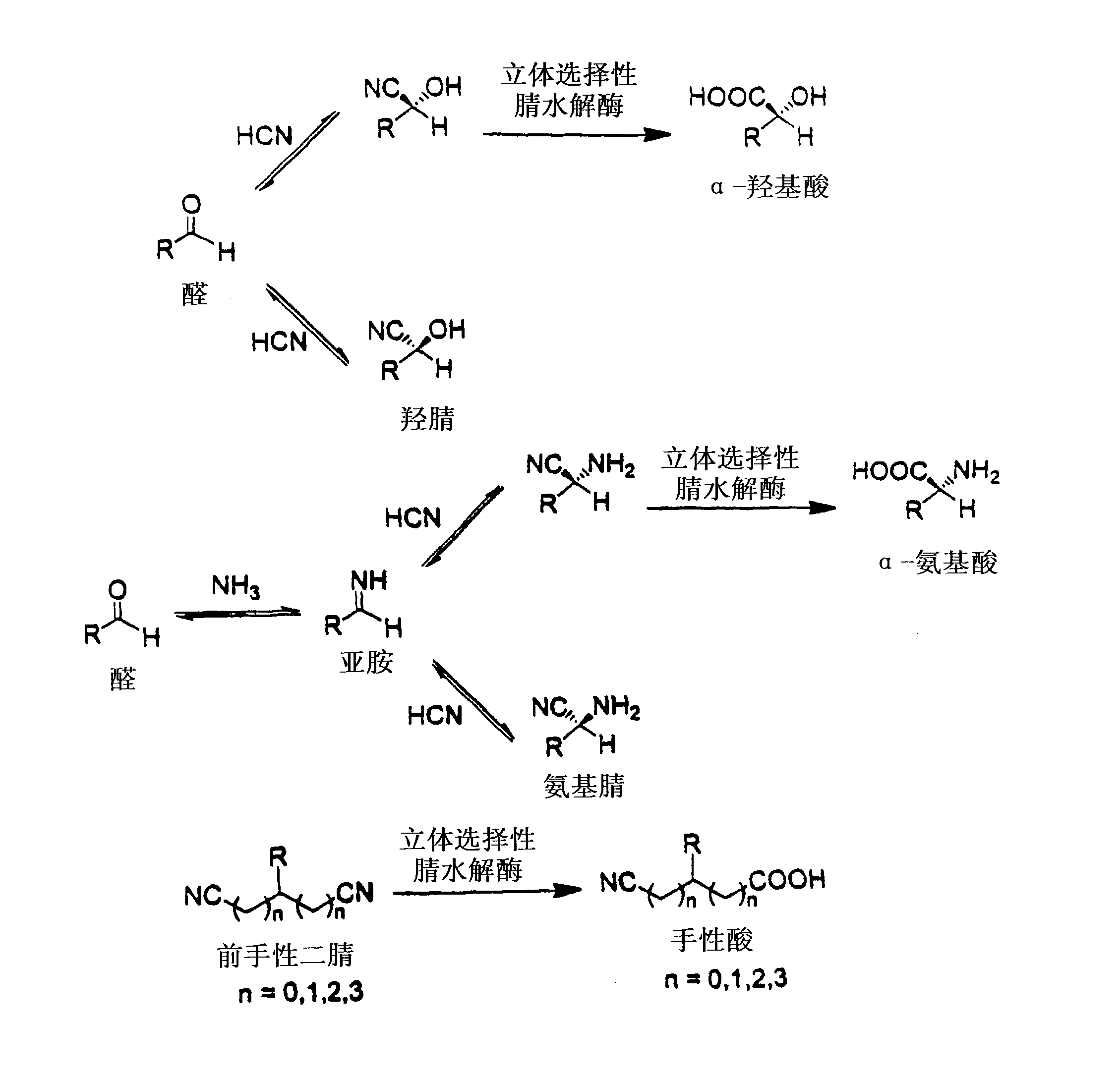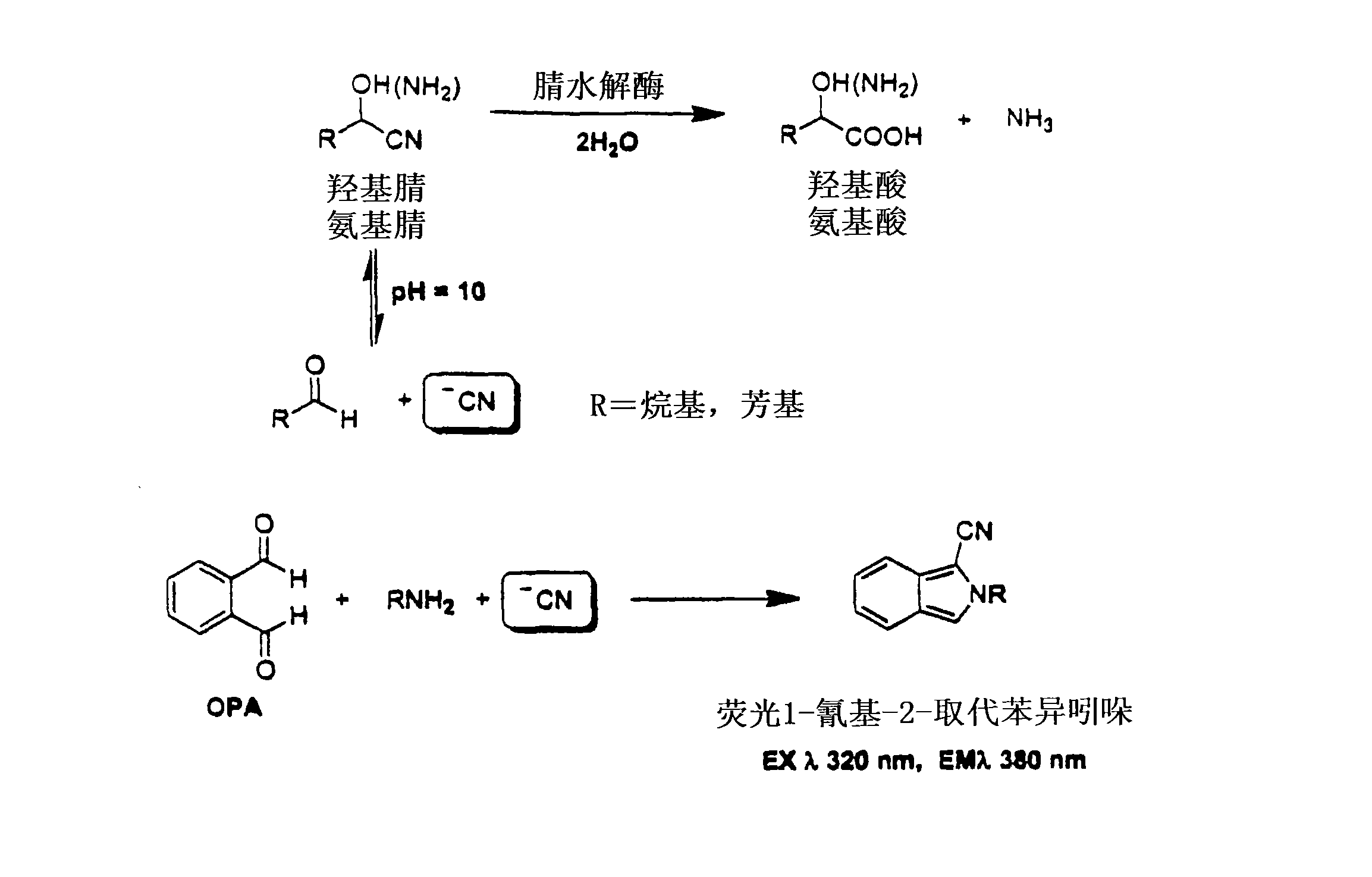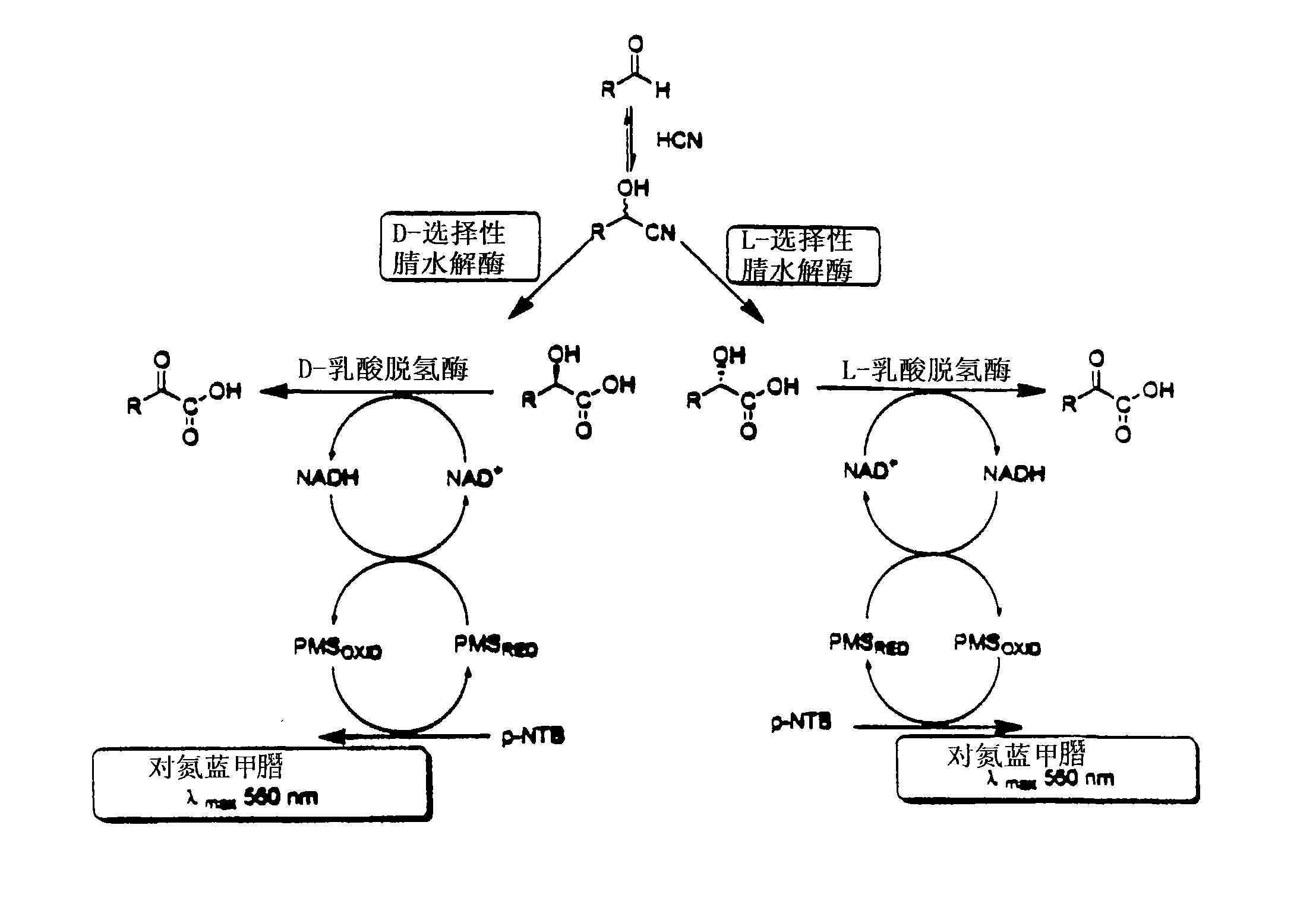Nitrilases, nucleic acids encoding them and methods for making and using Them
A technology of nitrilase and nucleic acid, applied in the fields of biochemistry, chemistry, and molecular biology, can solve the problems of not being able to participate in high-throughput screening, troubles, etc.
- Summary
- Abstract
- Description
- Claims
- Application Information
AI Technical Summary
Problems solved by technology
Method used
Image
Examples
Embodiment 1
[0340] Example 1: Phagemid Infection
[0341] For each library that was used to screen nitrilase, infections were prepared as follows: 5 ml of OD of SEL700 cells 600 The nm=1 resuspension was mixed with 1 ml of the phagemid library to be screened. The composition was incubated in a water bath at 37°C for 45 minutes.
[0342] Using the infection, in 10mM MgSO 4 Serial dilutions were performed in , using 10 μl aliquots of the infection.
[0343]
[0344] Place 60 μl of each of the following dilutions into a small LB-Kan 50 On tablet:
[0345]
[0346] Centrifuge the cells in the infection in a benchtop centrifuge at 4°C, 4.6k rpm for 10 min to form a pellet. The supernatant was decanted from the resulting pellet. Resuspend cells in remaining liquid. Place all resuspended cells into a single large LB-Kan 50 on the tablet. All plates were incubated overnight at 30°C.
Embodiment 2
[0347] Example 2: Selective Screening
[0348] With ∼4 ml 10mM MgSO 4 Resuspend the cells on each infection plate. Place the resuspension into a test tube. With ~3 mL of 10mM MgSO 4 The remaining cells on each plate were resuspended and combined with the first resuspension from the same plate. with 10mM MgSO 4 The volume of each tube was brought to 12 ml and the tubes were vortexed vigorously. Centrifuge the tubes in a benchtop centrifuge at 4°C, 4.6k for 10 min to form a pellet. From each resuspension, decant the supernatant. with 10ml 10mM MgSO 4 Resuspend the washed cells in each tube. Resuspensions of each library were stored at 4°C until ready to establish selective cultures.
[0349] For each resuspension, establish a selective culture using the following procedure:
[0350] 1) Prepare nitrilase selective medium using 1XM9 culture including 0.2% glucose, no nitrogen, and 50 μg / ml kanamycin (only for pBK phagemid library; for pBS library, use ampicillin) base...
Embodiment 3
[0356] Example 3: Isolation of positive nitrilase clones from selective cultures
[0357] Streak ten (10) μl of the growing selective culture into a small LB-Kan 50 plates and allowed to grow for two nights at 30 °C. Five isolated colony forming units (cfu) were picked and each of them was grown in 2 ml of nitrilase selective medium at 30°C. Each culture was monitored (where growth indicated positive colony forming units were picked) and removed when monitoring indicated it was in a stationary phase of growth. One (1) ml of culture was used to prepare phagemid preparations and eluted with 40 [mu]l of elution buffer. Five to eight (5-80) μl of DNA are spliced with Pst I / Xho I or Sac I / Kpn I restriction enzymes to remove the insert from the vector. A restriction fragment length polymorphism (RFLP) assay is done to identify the size of the insert. Inserts are sequenced.
PUM
 Login to View More
Login to View More Abstract
Description
Claims
Application Information
 Login to View More
Login to View More - R&D
- Intellectual Property
- Life Sciences
- Materials
- Tech Scout
- Unparalleled Data Quality
- Higher Quality Content
- 60% Fewer Hallucinations
Browse by: Latest US Patents, China's latest patents, Technical Efficacy Thesaurus, Application Domain, Technology Topic, Popular Technical Reports.
© 2025 PatSnap. All rights reserved.Legal|Privacy policy|Modern Slavery Act Transparency Statement|Sitemap|About US| Contact US: help@patsnap.com



